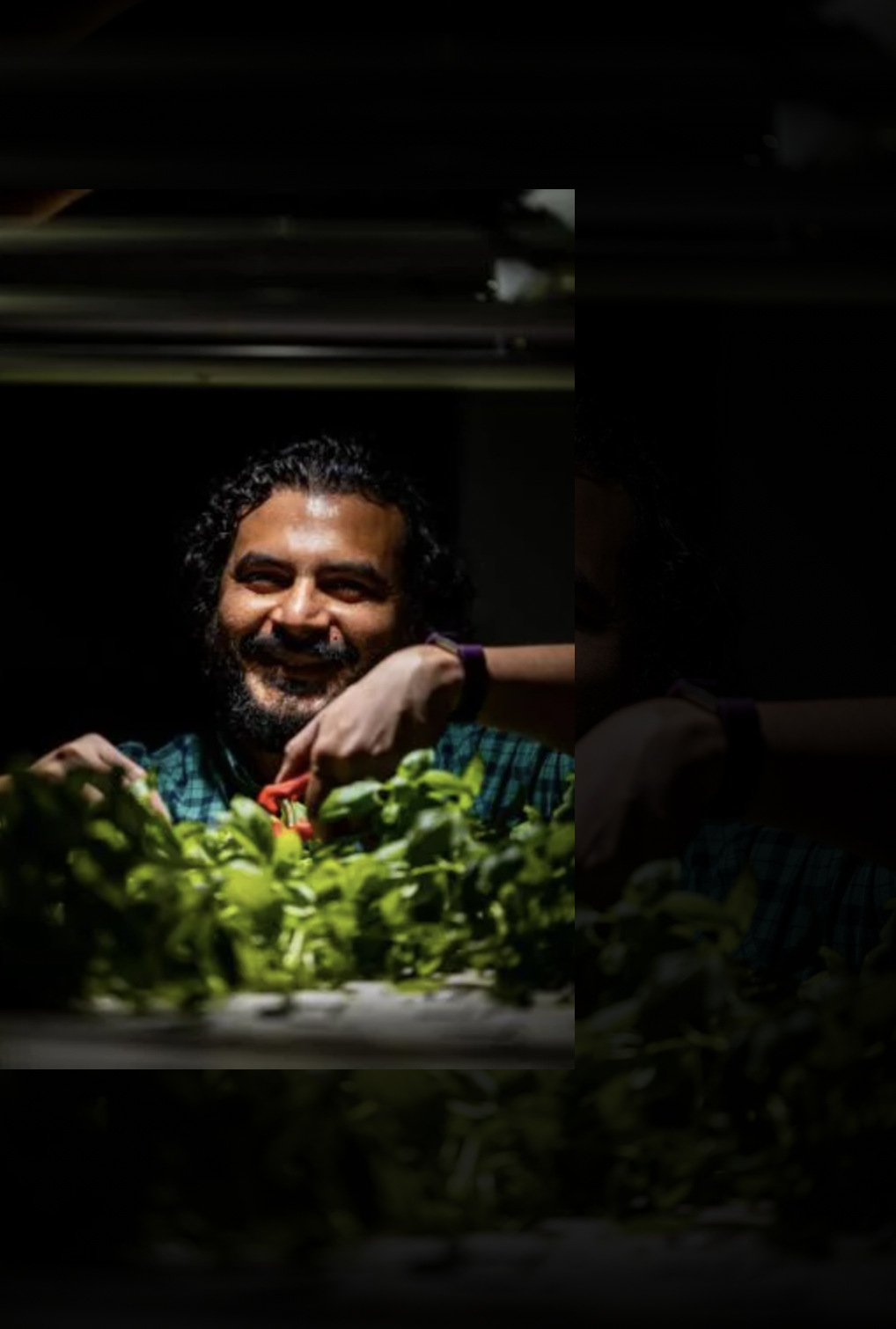Veteran And Urban Groups Team Up To Grow Produce And Peace of Mind
Hydroponics Can Ease Shortages of Fresh Food
by Linda Geist
November 14, 2023
University of Missouri Extension, the Missouri Institute for Defense and Energy at the University of Missouri-Kansas City and the Veterans Community Project are working on a problem shared by deployed military personnel and urban residents: access to fresh food.
The partners are looking at controlled-environment agriculture (CEA) as an alternative way to grow fresh and local food. Extension horticulturists plan to teach growing food with hydroponics, a technique that uses a nutrient solution rather than soil.
Using hydroponics and other systems, CEA farming allows plants to grow in their ideal environments without the usual constraints of temperature, water, sunlight, soil or location. It can also lessen shortages due to supply chain interruptions, says Juan Cabrera-Garcia, a horticulture specialist with a dual appointment at MU Extension and UMKC’s Missouri Institute for Defense and Energy (MIDE).
Cabrera-Garcia leads horticulture training in a pilot program to teach veterans to use CEA to grow food in Kansas City. The USDA Beginning Farmers and Ranchers program and the UMKC Entrepreneurship Innovation Program through the Kauffman Foundation fund the three-year From Seed to Table program.
The program is the brainchild of Angela Cottrell, director of research and institute programs for MIDE and adjunct instructor at UMKC. She envisioned a program in which veterans could gain new skills, receive pay, find future employment in agriculture or begin a new farming business.
Cottrell oversees three shipping containers retrofitted to grow hydroponic crops and indoor mushrooms. The container units are near the Veterans Community Project at 89th Street and Troost Avenue in Kansas City. The nonprofit project supports 49 nearby tiny homes and other services for military veterans where hopefulness replaces homelessness.
Hydroponics is not new to agriculture or the military. USDA plant scientists have studied hydroponics for more than a century. The U.S. Army used hydroponics to grow food on infertile islands during World War II. Cottrell says controlled-environment agriculture is expected to be a $170 billion industry by 2025.
Hydroponics does not compete with or replace traditional agriculture, she says. Instead, it supplements existing ways to grow fresh food for urban residents and military personnel in places where it is difficult or impossible to grow food.
Cottrell says the versatility of CEA systems allows the military to drop a grow container into a military forward operating base so that soldiers can have fresh, safe food regardless of location or climate. CEA systems also increase resilience in urban food systems where traditional agriculture is not suitable due to lack of space. This brings food production closer to consumers.
A retired veteran’s daughter, Cottrell explains how the veterans put their produce-safety training into practice in the container farm. “We want our customers to know that our product is clean and safe,” she says.
Juan Cabrera-Garcia, a horticulture specialist with dual appointments at MU Extension and the UMKC Missouri Institute for Defense and Energy, leads horticulture training in a pilot program to teach veterans to grow food in controlled environments in Kansas. Brandon Parig
Cottrell and Cabrera-Garcia oversee growing and harvesting of basil and mushrooms in the containers. Basil grows in a circulating nutrient solution under timed grow lights. Mushrooms grow in an inoculated medium such as sawdust or soy hulls in a room with controlled temperature, humidity and carbon dioxide levels. The team plans to add a third container for hydroponic strawberries.
The project’s goal is to train 50 military veterans, most within driving distance of Kansas City, to become beginning farmers, and for at least half of them to move on to full-time employment in agriculture.
“The purpose of this project is not to give any sort of employment, but meaningful employment, where our military veterans can feel proud of what they are doing and can carry this experience with them long-term,” says Bryan Meyer, CEO and co-founder of the Veterans Community Project.
Others will gain skills and certifications that open doors, he says. If the program is successful, Veterans Community Project hopes to implement it in five other states.
Cabrera-Garcia trains 12 veterans at a time, and there is a waiting list. MU Extension specialists and others give lectures and hands-on training on horticulture, pesticide safety, food safety, business skills and marketing. “They are always willing to learn,” he says. “It’s something the veterans find interesting.”
In addition to practical skills, veterans gain peace of mind while growing produce and friendships with other veterans.
Veterans learns to grow and market specialty crops such as mushrooms in a three-year pilot project conducted by MU Extension, the Missouri Institute for Defense and Energy at UMKC and Veterans Community Project. With these skills, veterans can go on to obt.
“Join the program if you get a chance,” says Steve, one of the participants. “There is tremendous peace of mind with being able to grow your own food indoors when land is really expensive and food costs are becoming more expensive.”
Ryan, another participant, agrees. “The more I work with plants and produce, it calms that part of me that I could never get calmed.”
Veterans sell basil and mushrooms from the containers under the name Chow Hall Farms at farmers markets and to upscale restaurants in Kansas City.
MU Extension is increasing its efforts to teach hydroponics because consumers increasingly value locally grown fresh food, says Cabrera-Garcia.
Cabrera-Garcia and MU Extension horticulturist Donna Aufdenberg are leading an effort to train specialists about hydroponics so that they can teach classes statewide. The Missouri Department of Agriculture’s Specialty Crop Block Grant Program funds the training. Cabrera-Garcia teaches some of the classes in both English and Spanish.
UMKC also is exploring an option to offer a minor in hydroponics. UMKC recently received a $29,998 grant from National Institute of Food and Agriculture’s Higher Education Challenge Program to survey the CEA industry to identify training needs and assess interest among UMKC students in developing a hydroponics program.
Lead photo: Three retrofitted trailers at 89th and Troost in Kansas City serve to teach veterans how to grow food without the usual constraints of temperature, water, sunlight, soil, or location. The trailers are near a community of 49 tiny homes for veterans. Brandon Parigo




